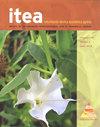Tipificación estructural y rentabilidad de explotaciones ovinas de carne
IF 0.4
4区 农林科学
Q4 AGRICULTURE, DAIRY & ANIMAL SCIENCE
引用次数: 0
Abstract
El Se trata de tipo de que desempeña un importante papel en zonas desfavorecidas por su contribución a la sostenibilidad económica, social y medioambiental, siendo importante garantizar su viabilidad económica. El objetivo genérico del presente trabajo ha sido analizar las posibles relaciones entre los resultados económicos de una muestra de explotaciones de ovino de carne ubicadas en Aragón (España) y determinados indicadores estructurales. Previamente se realizó una tipificación para estudiar su variabilidad. La muestra la componen 126 ganaderías aragonesas de ovino de carne. Se utilizan las medias de las variables durante un período que oscila entre 5 y 24 años dentro del periodo 1993-2016. Se realizó un análisis factorial sobre diez variables estructurales y se identificaron cuatro factores a par-tir de los cuáles se obtuvieron dos grupos significativamente diferentes en cuanto a sus características estructurales. Abstract The sheep meat sector is experiencing a strong recoil in Spain and in the European Union. It is a type of livestock that plays an important role in disadvantaged areas for its contribution to economic, social and environmental sustainability, being important to ensure its economic viability. The generic ob-jective of this work has been to analyze the possible relationship between the economic results of a sample of sheep meat farms located in Aragon (Spain) and certain structural indicators. Previously a typification was done to study their variability. The sample is made up of 126 Aragonese meat sheep explotaciones como más o farms. The variables’ means are used during a period that varies between 5 and 24 years within the 1993-2016 period. A factor analysis was performed on ten structural variables and four factors were identi-fied from which two significantly different groups of farms were obtained in terms of their structural characteristics. The gross margin per total labor unit was chosen as an indicator of the economic result of farms, and was calculated considering or not the remuneration of family labor. By means of a multiple linear regression the dependence of this economic result on structural variables previously analy-zed was established. It can be concluded that the optimization of the number of ewes per total labor unit and per hectare of the used agricultural area, are aspects to be considered when improving the profitability and viability of sheep meat farms.肉羊养殖场的结构类型和盈利能力
由于其对经济、社会和环境可持续性的贡献,它在贫困地区发挥着重要作用,重要的是要确保其经济生存能力。这项工作的总体目标是分析位于西班牙阿拉贡的一个肉类绵羊养殖场样本的经济业绩与某些结构指标之间可能存在的关系。此前进行了分型以研究其可变性。该样本由126个阿拉贡肉羊牧场组成。使用1993-2016年期间5至24年期间的变量平均值。对10个结构变量进行了因子分析,并确定了4个PAR-TIR因子,从中获得了两个在结构特征方面明显不同的组。摘要西班牙和欧盟的羊肉行业正在经历强劲复苏。它是一种牲畜,在弱势地区对经济、社会和环境可持续性的贡献发挥着重要作用,对确保其经济生存能力很重要。这项工作的总目标是分析位于阿拉贡(西班牙)的一个绵羊肉类农场样本的经济结果与某些结构指标之间可能存在的关系。此前,对其进行了类型化研究。该样本由126个阿拉贡肉羊农场组成,如Moro或Farms。这些变量的意思是在1993-2016年期间的5至24年期间使用。对10个结构变量进行了因子分析,确定了4个因子,从中获得了两个明显不同的农场群体的结构特征。每个总劳动单位的毛利润被选为农场经济业绩的指标,并考虑到或不考虑家庭劳动的报酬来计算。通过多重线性回归,确定了这一经济结果对先前分析的结构变量的依赖性。可以得出的结论是,在提高肉羊养殖场的盈利能力和生存能力时,应考虑优化每单位总劳动力和每公顷农业用地的就业人数。
本文章由计算机程序翻译,如有差异,请以英文原文为准。
求助全文
约1分钟内获得全文
求助全文
来源期刊

Itea-Informacion Tecnica Economica Agraria
农林科学-农业经济与政策
CiteScore
0.90
自引率
0.00%
发文量
15
审稿时长
>12 weeks
期刊介绍:
ITEA publica artículos que hagan referencia a los distintos aspectos de las ciencias agro‑alimentarias, cuyo contenido sean resultados obtenidos, descripción de métodos, técnicas o materiales, presentación de nuevas ideas, etc.
 求助内容:
求助内容: 应助结果提醒方式:
应助结果提醒方式:


